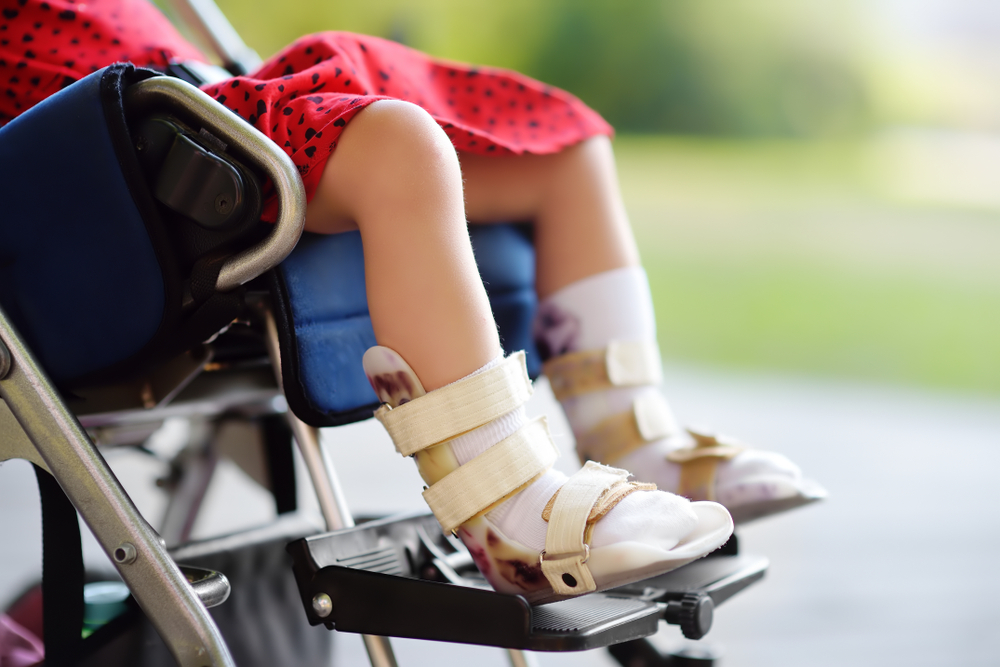
Types of Birth Injuries
Birth injuries can vary widely in type and severity, often depending on the circumstances surrounding the delivery process. Some of the most common injuries include cerebral palsy, which affects muscle coordination and body movement, and brachial plexus injuries, which involve damage to the nerves that send signals from the spine to the shoulder, arm, and hand.
Other types of injuries may include:
- Fractures, particularly to the collarbone or arm
- Perinatal asphyxia, resulting in oxygen deprivation to the brain
- Intracranial hemorrhage, or bleeding within the brain
- Facial paralysis, which can occur when there is pressure on the baby’s face during delivery
Each type of injury may require different modifications to the home environment to accommodate the child’s specific needs. Understanding the nature and extent of the injury is crucial in creating a supportive and nurturing home.
Long-Term Effects on Child Development
Birth injuries can have a profound impact on a child’s development, often requiring ongoing support and intervention. The long-term effects can vary widely depending on the nature and severity of the injury. For instance, children with brain damage may experience cognitive delays, while those with nerve damage could have physical disabilities affecting their motor skills.
- Cognitive Development: Children with birth injuries may face challenges in learning, memory, and problem-solving. Early special education interventions can be pivotal in addressing these issues.
- Physical Development: Physical therapy and adaptive equipment are often necessary for children with motor skill impairments due to nerve damage.
- Emotional and Social Development: Social support is essential for fostering emotional well-being and helping children build relationships despite developmental delays.
Families may also seek legal help for preventable birth injuries, which is an important step towards justice and compensation. The prognosis for children with birth injuries such as skull fractures can vary, and it is crucial to have a tailored approach to each child’s needs.
Navigating Daily Challenges
Children with birth injuries may face a variety of daily challenges that can affect their ability to participate in typical activities. These challenges often require thoughtful solutions to help the child navigate their environment more effectively.
- Routine Adaptation: Establishing a consistent routine can help children anticipate and prepare for activities throughout the day. This includes structured times for meals, play, therapy, and rest.
- Communication Aids: For children with speech or language impairments, visual aids, sign language, or speech-generating devices can be crucial in helping them express their needs and interact with others.
- Environmental Controls: Simple modifications such as lever-style door handles, touch-activated faucets, and voice-controlled lighting can empower children to operate within their living space with greater independence.
Families may also find it beneficial to engage in regular problem-solving sessions to address new challenges as they arise. By doing so, they can adapt the home environment continuously to meet the evolving needs of the child. Collaboration with occupational therapists can provide insights into the most effective strategies for enhancing daily living skills.
Designing an Accessible Home Environment
Assessment of Home Accessibility Needs
Before making any modifications, it’s crucial to assess the home’s current accessibility. This process involves a detailed evaluation of the living space to identify potential barriers that might limit a child’s independence or safety. The assessment should be thorough, covering all areas of the home from entryways to bedrooms.
Key steps in the assessment include:
- Examining entry points for ease of access
- Evaluating the width and navigation of hallways and doorways
- Assessing the functionality of bathrooms and kitchens
- Identifying potential hazards or areas that may require additional support
Professionals such as occupational therapists can provide valuable insights during this assessment. They are skilled in recognizing the unique needs of children with birth injuries and can suggest practical solutions. For instance, information on the Boston Children’s website about Brachial Plexus Birth Injury can be a resource for understanding specific accessibility needs. Additionally, involving the child in the assessment process ensures that modifications will align with their preferences and encourage their autonomy.
Key Principles of Universal Design
Universal Design is a strategic approach aimed at creating environments that are accessible to all people, regardless of age, disability, or other factors. The core principles of Universal Design ensure that homes are not only safe and functional for children with birth injuries but also promote their independence and inclusion.
- Equitable Use: The design is useful and marketable to people with diverse abilities. This principle ensures that children with birth injuries have equal access to all areas of the home.
- Flexibility in Use: The design accommodates a wide range of individual preferences and abilities. For children affected by conditions like cerebral palsy or Erb’s palsy conditions, this means having adaptable spaces that can be customized to their needs.
- Simple and Intuitive Use: Use of the design is easy to understand, regardless of the user’s experience, knowledge, or concentration level. This is particularly beneficial for children who face cognitive challenges due to their birth injuries.
- Perceptible Information: The design communicates necessary information effectively to the user, regardless of ambient conditions or the user’s sensory abilities. This includes clear labeling of adaptive equipment and technology.
- Tolerance for Error: The design minimizes hazards and the adverse consequences of accidental or unintended actions. This is crucial in creating a safe environment for children who may have limited control over their movements.
- Low Physical Effort: The design can be used efficiently and comfortably with a minimum of fatigue. For children with birth injuries, this means having a home that requires less physical effort to navigate and interact with.
- Size and Space for Approach and Use: Appropriate size and space are provided for approach, reach, manipulation, and use, regardless of the user’s body size, posture, or mobility. This ensures that children with birth injuries can move freely and use the space effectively.
By adhering to these principles, families can create a home that not only accommodates the unique needs of a child with a birth injury but also fosters a sense of belonging and autonomy.
Incorporating Adaptive Equipment and Technology
Adaptive equipment and technology play a crucial role in enhancing the lives of children with birth injuries. These tools are designed to assist with daily activities, promote independence, and improve the overall quality of life. When selecting adaptive equipment, it is essential to consider the specific needs of the child and how the equipment can be integrated into the home environment.
- Communication Devices: For children with speech or language impairments, communication devices such as speech-generating devices or apps can facilitate interaction with family members and peers.
- Mobility Aids: Wheelchairs, walkers, and gait trainers can be customized to support a child’s mobility, allowing them to navigate their home and community with greater ease.
- Educational Technology: Tablets and specialized software can provide educational support, catering to various learning styles and needs.
- Environmental Controls: Smart home technology can empower children to control lights, temperature, and entertainment systems independently, fostering a sense of control and autonomy.
Incorporating these technologies requires careful planning to ensure that the home environment is adapted to accommodate the equipment. This may involve rearranging furniture, widening doorways, or installing ramps. Parents and caregivers should work closely with occupational therapists and other professionals to create a supportive and functional living space that accommodates the child’s evolving needs.
Creating Safe and Stimulating Spaces
Safety Modifications for Injury-Specific Needs
When adapting a home for a child with birth injuries, safety is paramount. Each modification must be tailored to the child’s specific needs to prevent accidents and facilitate ease of movement. For instance, securing furniture to the wall can prevent tipping, and installing window guards can protect against falls.
To further enhance safety, consider the following steps:
- Install door alarms or safety gates to monitor and control access to potentially dangerous areas.
- Use corner guards on furniture to minimize injury from sharp edges.
- Ensure that flooring is slip-resistant, especially in areas like the bathroom and kitchen.
- Adjust lighting to eliminate shadows and glare, which can be disorienting or hazardous.
These modifications not only safeguard the child but also provide peace of mind for the family. It’s important to remember that while families of children with birth injuries can file lawsuits for compensation, the primary goal is to create a living space that supports the child’s well-being and development.
Sensory Rooms and Therapeutic Spaces
Sensory rooms and therapeutic spaces are essential in providing a nurturing environment that caters to the unique needs of children with birth injuries. These specialized areas are designed to stimulate or calm the senses, aiding in the child’s development and well-being.
- Stimulation of Senses: Sensory rooms use lights, colors, textures, and sounds to engage a child’s senses, which can be particularly beneficial for children with sensory processing disorders.
- Therapeutic Benefits: These spaces can also serve therapeutic purposes, offering a safe haven where children can explore and interact at their own pace, promoting both physical and emotional healing.
- Customization: It’s important to tailor these spaces to the individual child, considering their specific preferences and therapeutic needs. This might involve adjustable lighting, soundproofing, or specialized equipment.
Creating such spaces often requires collaboration with healthcare professionals to ensure that the design and equipment are appropriate for the child’s condition. For families seeking guidance, firms like Reiter & Walsh, P.C. can be a valuable resource, providing expertise in birth injury cases and helping to navigate the complexities of creating a supportive home environment.
Inclusive Play Areas for Social Development
Inclusive play areas are essential for fostering social skills and emotional growth in children with birth injuries. These spaces are designed to be welcoming and accessible to children of all abilities, allowing them to play and interact with their peers on an equal footing.
- Variety of Play Equipment: To cater to different needs and preferences, a range of play equipment should be included. This can range from tactile toys for sensory stimulation to low-height structures for easy access.
- Barrier-Free Design: The play area should be free of physical barriers that might prevent a child from participating. Wide pathways and ramps instead of steps ensure that children with mobility challenges can navigate the space freely.
- Social Interaction Zones: Designated areas for group activities can encourage cooperative play and help children develop communication skills. These zones can include interactive games that require teamwork or spaces for imaginative play.
Creating an inclusive play area not only benefits children with birth injuries but also promotes understanding and empathy among all children. It is a step towards building a more inclusive society where differences are celebrated and every child has the opportunity to thrive.
Fostering Independence Through Home Layout
Adapting Bedrooms and Bathrooms for Autonomy
Creating an environment that promotes independence for children with birth injuries is crucial, especially in personal spaces like bedrooms and bathrooms. These adaptations not only foster self-reliance but also enhance safety and comfort.
In the bedroom, consider the following modifications:
- Adjustable beds that can be easily accessed and positioned
- Touch-activated lamps and voice-controlled devices for easy operation
- Accessible storage solutions at an appropriate height
Bathroom adaptations are equally important and can include:
- Walk-in showers with non-slip surfaces
- Grab bars strategically placed for stability
- Height-adjustable sinks and toilets to accommodate growth and mobility aids
These changes, tailored to the child’s specific needs, can significantly improve their ability to perform daily tasks independently and with confidence.
Kitchen and Dining Area Adjustments
The kitchen and dining areas are central to family life, and making them accessible is crucial for children with birth injuries. Adjustments in these spaces can promote independence and participation in family activities. Simple modifications may include lowering countertops or installing pull-out shelves to make kitchen tools and ingredients more accessible to children in wheelchairs.
For dining, adjustable-height tables and chairs that provide proper support can make a significant difference. It’s also beneficial to use non-slip mats and utensils with easy-grip handles to aid children with limited motor skills. Here are some key adjustments to consider:
- Install lever-style faucets that are easier to operate.
- Use drawers and cabinets with easy-pull handles or touch-to-open mechanisms.
- Choose appliances with front-mounted controls and tactile indicators.
- Ensure there is ample maneuvering space for mobility devices.
By thoughtfully adapting the kitchen and dining areas, families can help children with birth injuries feel more included in daily routines and social interactions.
Mobility and Navigation Considerations
Ensuring that children with birth injuries can move freely and safely around their home is crucial for fostering independence and confidence. Thoughtful modifications can significantly enhance mobility and reduce the risk of accidents. Here are some key considerations for optimizing home layout for navigation:
- Clear Pathways: Keep hallways and spaces between furniture wide and clear of obstacles to accommodate mobility aids such as walkers or wheelchairs.
- Flooring: Choose non-slip, smooth flooring that allows for easy movement and is gentle on the feet and joints.
- Stair Accessibility: Install ramps or stairlifts if necessary, and ensure handrails are at an appropriate height and strength for the child’s use.
- Doorways: Widen doorways to at least 32 inches to allow for wheelchair access and consider lever-style door handles that are easier to operate.
In addition to structural changes, incorporating smart home technology can provide children with birth injuries greater control over their environment. Automated systems for lighting, temperature, and door locks can be operated via voice commands or accessible interfaces, empowering children to manage their surroundings with minimal assistance. Regularly reviewing the layout and functionality of the home with occupational therapists can ensure that the environment continues to meet the evolving needs of the child as they grow and develop.
Engaging the Community and Professional Support
Collaborating with Healthcare Professionals
Creating a supportive environment for children with birth injuries often requires a multidisciplinary approach. Collaboration with healthcare professionals is essential to ensure that home modifications meet the specific needs of the child. These professionals can include pediatricians, occupational therapists, physical therapists, and speech-language pathologists, among others.
The process typically involves several steps:
- Initial Consultation: Families should start by consulting with their child’s primary healthcare provider to discuss the necessity and scope of home modifications.
- Referrals: Healthcare providers can refer families to specialists who can assess the child’s needs in greater detail.
- Collaborative Planning: A team of professionals will work together with the family to create a comprehensive plan that addresses all aspects of the child’s daily life.
- Implementation: Professionals can oversee the installation of equipment and modifications, ensuring they are safe and effective.
- Ongoing Support: Regular follow-ups with healthcare professionals help to adjust the environment as the child grows and their needs change.
By engaging with healthcare professionals, families can tap into a wealth of knowledge and experience. This collaborative effort can lead to a more functional and nurturing home environment that promotes the child’s independence and well-being. Organizations like the March of Dimes are instrumental in supporting maternal and infant health, advocating for families, and providing valuable resources.
Accessing Community Resources and Funding
For families of children with birth injuries, navigating the financial aspects of home modifications can be daunting. However, a wealth of community resources and funding options are available to alleviate this burden. Identifying and accessing these resources is a crucial step in creating a supportive home environment.
- Begin by researching local non-profits and charities that offer grants specifically for families dealing with disabilities. These organizations often have programs designed to assist with the costs of home modifications.
- Government programs at the federal, state, and local levels can provide financial assistance or tax benefits for making accessibility improvements. It’s important to understand the eligibility criteria and application processes for these programs.
- Crowdfunding platforms have emerged as a modern solution for raising funds. By sharing their stories online, families can connect with a broader community willing to support their cause.
Engaging with local support groups and disability advocacy organizations can also provide insights into additional resources. These groups often have firsthand experience and can offer guidance on the most effective ways to secure funding. Moreover, they can be a source of emotional support, helping families to navigate the complexities of raising a child with a birth injury.
Building a Support Network for Families
For families of children with birth injuries, a robust support network can be a lifeline. This network often extends beyond immediate family members to include friends, neighbors, and community members who offer emotional and practical support.
- Emotional Support: Sharing experiences with others who understand can provide comfort and reduce feelings of isolation. Support groups, both in-person and online, can be invaluable.
- Practical Support: Assistance with daily tasks, such as transportation or childcare, can alleviate some of the pressures on the family. Establishing a schedule with volunteers can help manage these needs efficiently.
- Information Sharing: A network can serve as a resource for sharing information about new therapies, medical updates, or educational opportunities that can benefit the child.
Building this network requires effort and openness. Families should not hesitate to reach out to local organizations, advocacy groups, and online communities that specialize in supporting children with disabilities. By fostering these connections, families can create a nurturing environment that extends well beyond the walls of their home.




